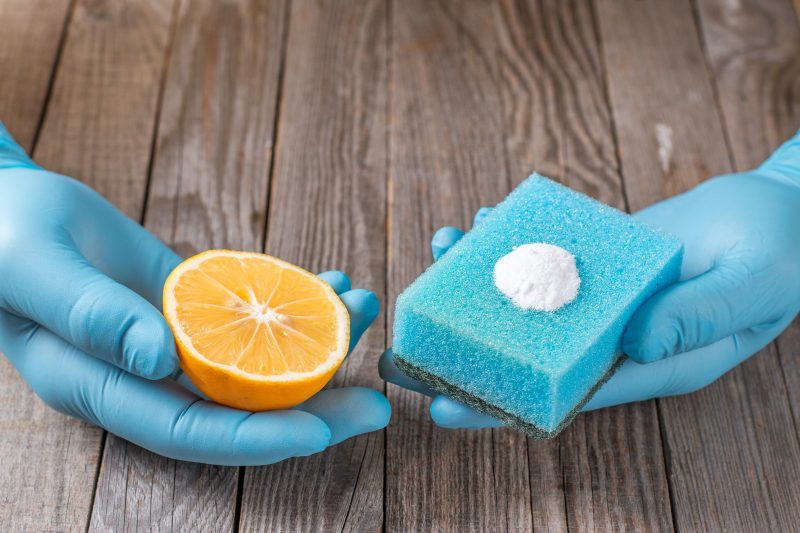It's spring cleaning time again! But do you know that there are cleaners that leave your house less clean than before you started? Do you know that
It’s spring cleaning time again!
But do you know that there are cleaners that leave your house less clean than before you started? Do you know that some cleaners can harm you and your family’s health in the long run?
While your house may look clean, the cleaners that you use have chemicals that are toxic, poisonous, and irritating.
According to Maidsailors, “It’s possible to clean your home from top to bottom, without using harmful chemicals. They’re your homemade cleaners, and you’d be even surprised that you have most of these ingredients in your home.”
Not only they’re easy to make, but they’re also economical and doesn’t hurt the environment.
Here are the 20 chemical-free recipes for DIY spring cleaning:
Cleaning Recipes for Every Surface
Bathroom
Toilets
If you want a thorough toilet scrub that deodorizes and cleans, mix ten drops of tea tree oil and a ½ cup of baking soda. Then, add a ¼ cup of vinegar on the bowl to scrub away the moisture fizzes.
For a daily clean, fill a spray bottle with vinegar and a few drops of essential oil. Spray them on your toilet seat, let it sit for a few minutes before wiping off.
Tub and Shower
Both tub and shower can build the toughest grime. To take off the mildew, spray white vinegar on the area, letting it sit for about 30 minutes. Rinse it with warm water afterwards.
Bathroom Disinfectant
It’s time to skip the bleach and instead use a homemade germ-killer. All you need to do is to mix it with three tablespoons of liquid soap, two cups of water, and 20 to 30 drops of tea tree oil and you’re good to go!
Bathroom Air Freshener
Do you know that you can also create a non-toxic air cleaner? The ingredients are essential oil, baking soda, and an old jar that you won’t mind to make holes on.
Kitchen
Countertops
Mix equal proportions of vinegar and water in a spray bottle. This will make a fantastic all-purpose countertop cleaner. However don’t use it if your countertop is made of granite, marble, or stone since the acidity of the vinegar isn’t suitable for these surfaces. Use vodka or alcohol instead.
Cutting Boards
Do you want to know a non-toxic way to sanitize your cutting boards? Use lemon! Cut it in half, run it over surfaces, let it sit for a few minutes, then rinse.
Garbage Disposal
Pour out a cup of vinegar in an ice cube tray, then top the slots with water. After they’re frozen, toss it in your garbage bin and let it run. That way, it will remove any excess food that is stuck on the blades.
Microwave
Some people tend to overlook the microwave when cleaning. To get rid of the gunk, pour vinegar and a bit of lemon juice in a small cup. Let the microwave run for two minutes. Then, open it and wipe the surfaces with a warm cloth.
Sink Drain
To unclog a drain, boil two cups of water. Then pour a ½ cup of baking soda into it and add water while it’s hot.
If it doesn’t work, follow it up with a ½ cup of vinegar and cover it up tightly. Wait until the fizzing dies down before adding another gallon of boiling water.
Dishwasher Detergent
To clean your dishwasher, mix a cup of water with one cup of liquid castile soap in a quart-size glass jar.
Add some of this mixture in a detergent compartment of your dishwasher. Then, fill the other compartment with vinegar.
Refrigerator Cleaner
Get a baking soda, then add a ½ cup in a bucket of hot water. Dip a clean cloth and wipe the insides of the fridge.
Laundry Room
Laundry Detergent
It’s hard to come up with a laundry detergent that doesn’t use Borax, but you can try using these instead: Washing soda, glycerine soap, citric acid, baking soda, and harsh soap.
Fabric Softener
Skip the traditional fabric softener by adding 20-30 drops of the essential oil to a gallon of white vinegar. Place a 1/3 cup to every laundry load. Make sure the content is shaken well before use.
Laundry “Scenter”
You can have your organic laundry scenter made from your favourite dried herbs like lavender, peppermint, lemon verbena. Just toss them in the dryer during use to add a fresh, clean, scent to your laundry.
Everything Else
Floors
To have a non-toxic tile cleaner, combine in bucket two parts warm water, and one part white vinegar. Then use a rag or mop to scrub the floors.
Walls
When cleaning the walls, mix a quart of warm water with ¼ cup white vinegar. Then, scrub the walls with a rug. To take off dark spots, scrub it a little bit with baking soda.
Windows and Mirrors
To make an all-purpose window cleaner, mix four parts water and one part vinegar. After, use a rag or sponge to scrub it away.
Furniture Polish
If you want to create an all-purpose furniture polish, mix ¾ cup olive oil and ¼ cup vinegar, and use a soft cloth to polish. For your furniture that is made of wood, combine ½ cup olive oil with ¼ cup lemon juice and follow the same steps.
Silver Cleaner
Silver utensils and jewellery can also be clean in a non-toxic way. Line the sink with aluminium foil, then place the silver on top of the aluminium. Then pour a cup of baking soda with a pinch of salt. Wait it out for a few minutes and voila! The tarnish is gone.
Wood Cleaner
To clean varnished wood, mix a tablespoon of white vinegar, two tablespoons of olive oil and a quart of warm water. Then spray it to the wood and then dry with a clean cloth.
Over to You
So there you have it. Those are the 20 non-toxic recipes that you can use for your next DIY spring cleaning. You’d be surprised that they’ll do their job like more potent cleaning products (even better!). So why not give them a try and see for yourself if it works?




COMMENTS